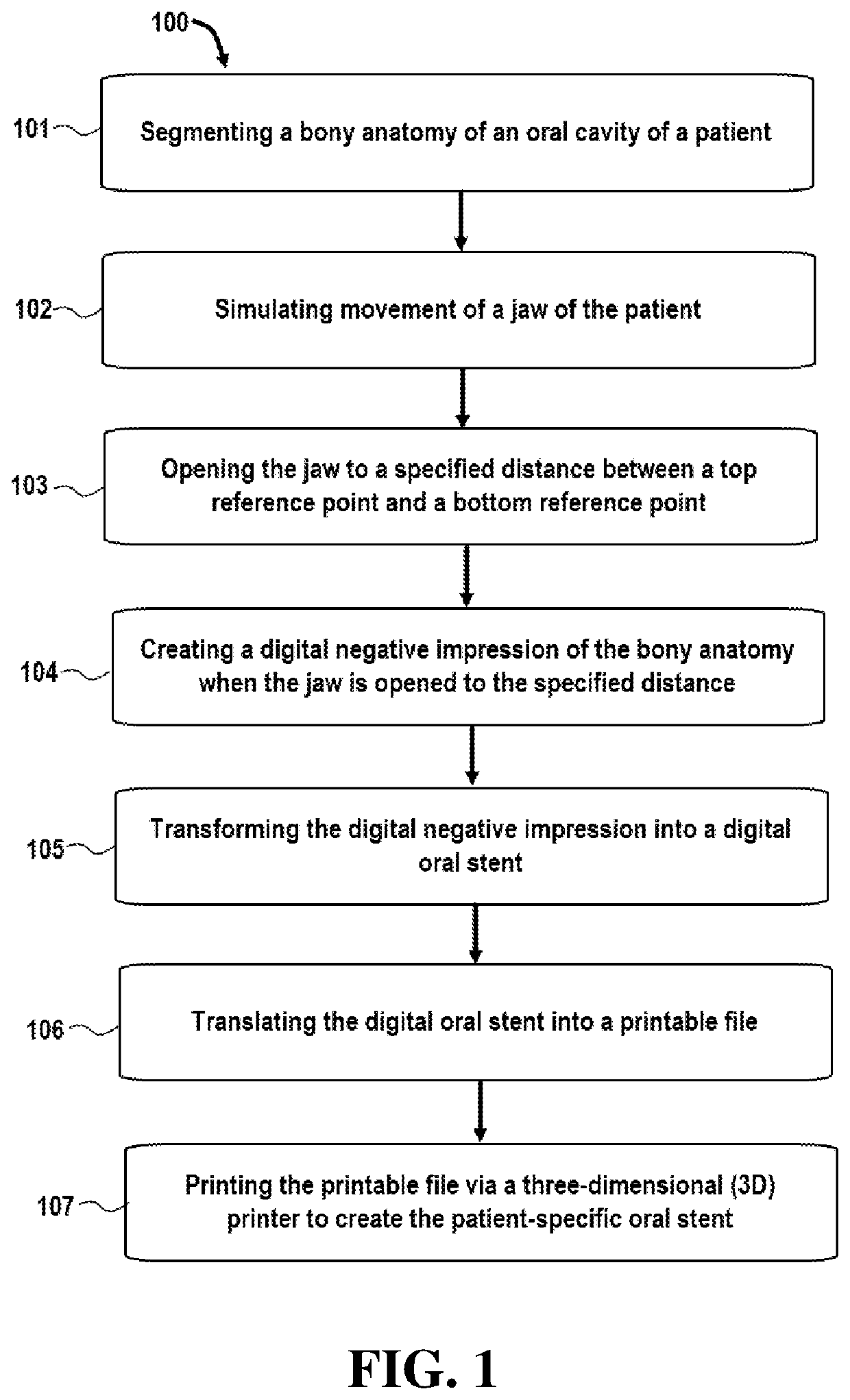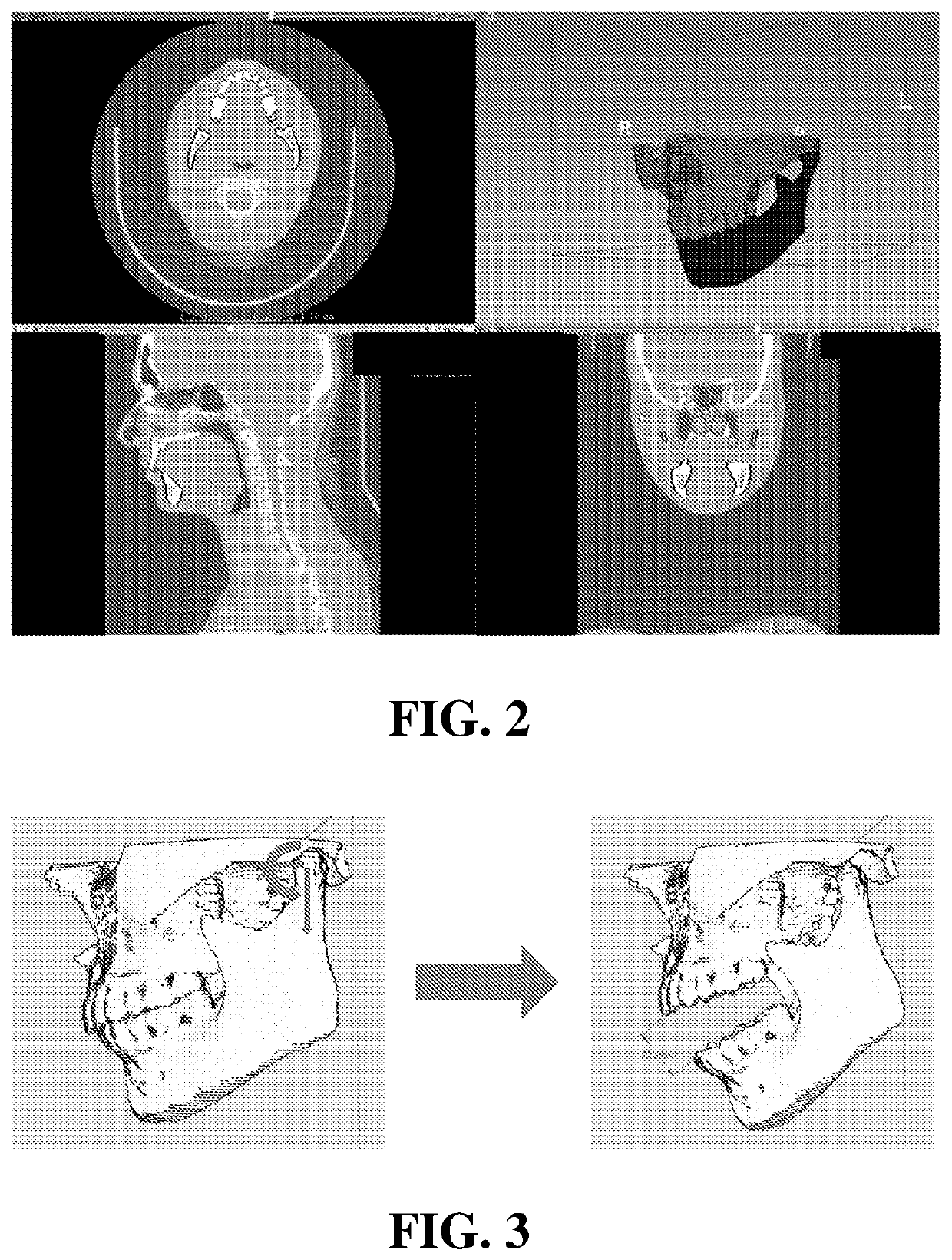Apparatus and methods for three-dimensional printed oral stents for head and neck radiotherapy
a three-dimensional printing and radiotherapy technology, applied in the field of three-dimensional printing oral stents for can solve the problems of patient-specific oral stents, mucositis and dysgeusia of head and neck radiotherapy, and many community dentists without specific training
- Summary
- Abstract
- Description
- Claims
- Application Information
AI Technical Summary
Benefits of technology
Problems solved by technology
Method used
Image
Examples
Embodiment Construction
[0039]As discussed more fully below, exemplary embodiments of the present disclosure include devices and methods for manufacturing a patient-specific oral stent for head and neck radiotherapy. While the individual aspects of the methods will be described later in further detail, an overview of an exemplary method will be initially presented.
[0040]Referring initially to FIG. 1, method 100 for manufacturing a patient-specific oral stent for head and neck radiotherapy comprises a series of steps 101-107. Method 100 includes initially segmenting a bony anatomy of an oral cavity of a patient in step 101. Next, movement of a jaw of the patient is simulated in step 102, and the jaw is opened to a specified distance between a top reference point and a bottom reference point in step 103. A digital negative impression of the bony anatomy can be created when the jaw is opened to the specified distance in step 104. Next, the digital negative impression can be transformed into a digital oral ste...
PUM
 Login to View More
Login to View More Abstract
Description
Claims
Application Information
 Login to View More
Login to View More - R&D
- Intellectual Property
- Life Sciences
- Materials
- Tech Scout
- Unparalleled Data Quality
- Higher Quality Content
- 60% Fewer Hallucinations
Browse by: Latest US Patents, China's latest patents, Technical Efficacy Thesaurus, Application Domain, Technology Topic, Popular Technical Reports.
© 2025 PatSnap. All rights reserved.Legal|Privacy policy|Modern Slavery Act Transparency Statement|Sitemap|About US| Contact US: help@patsnap.com



